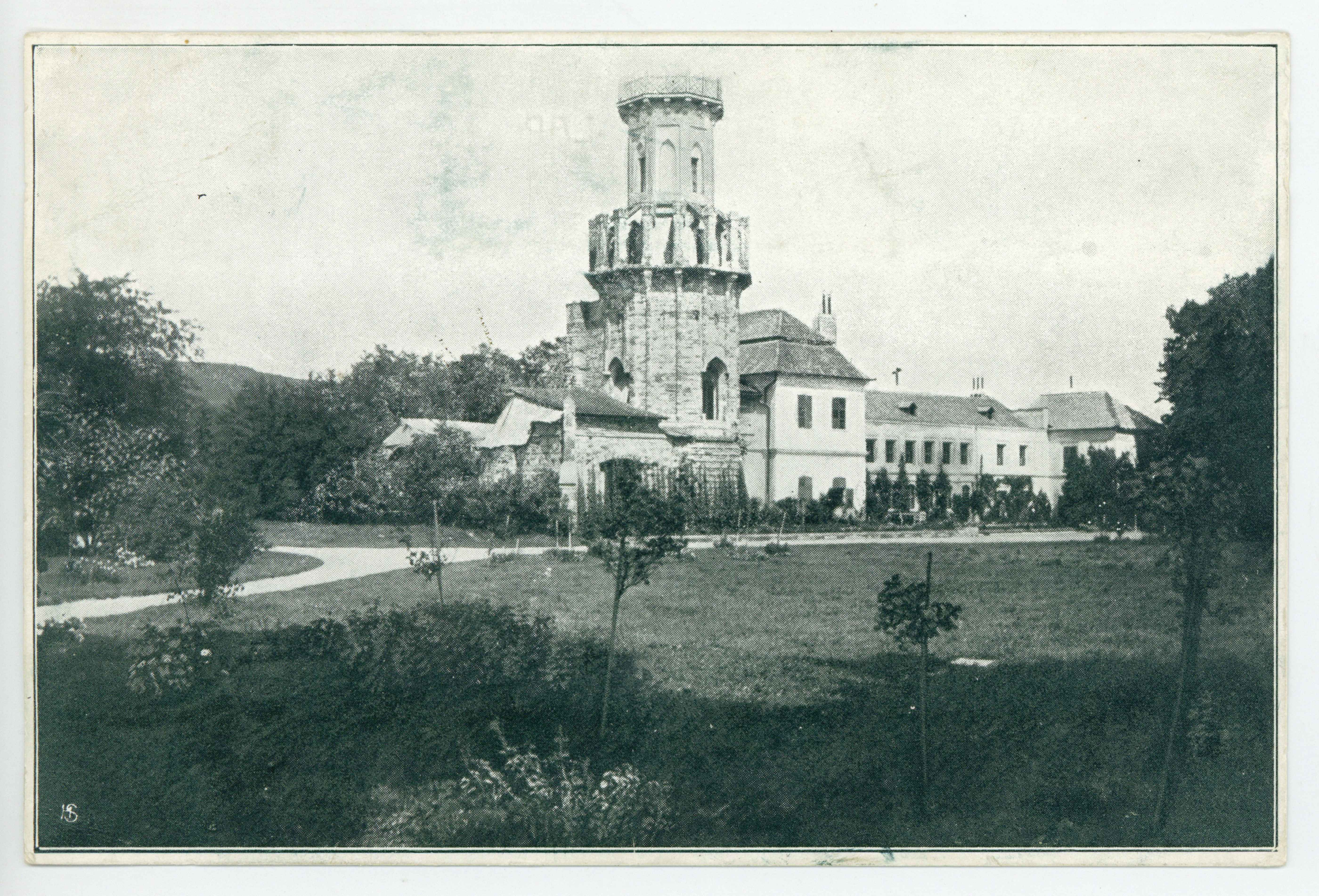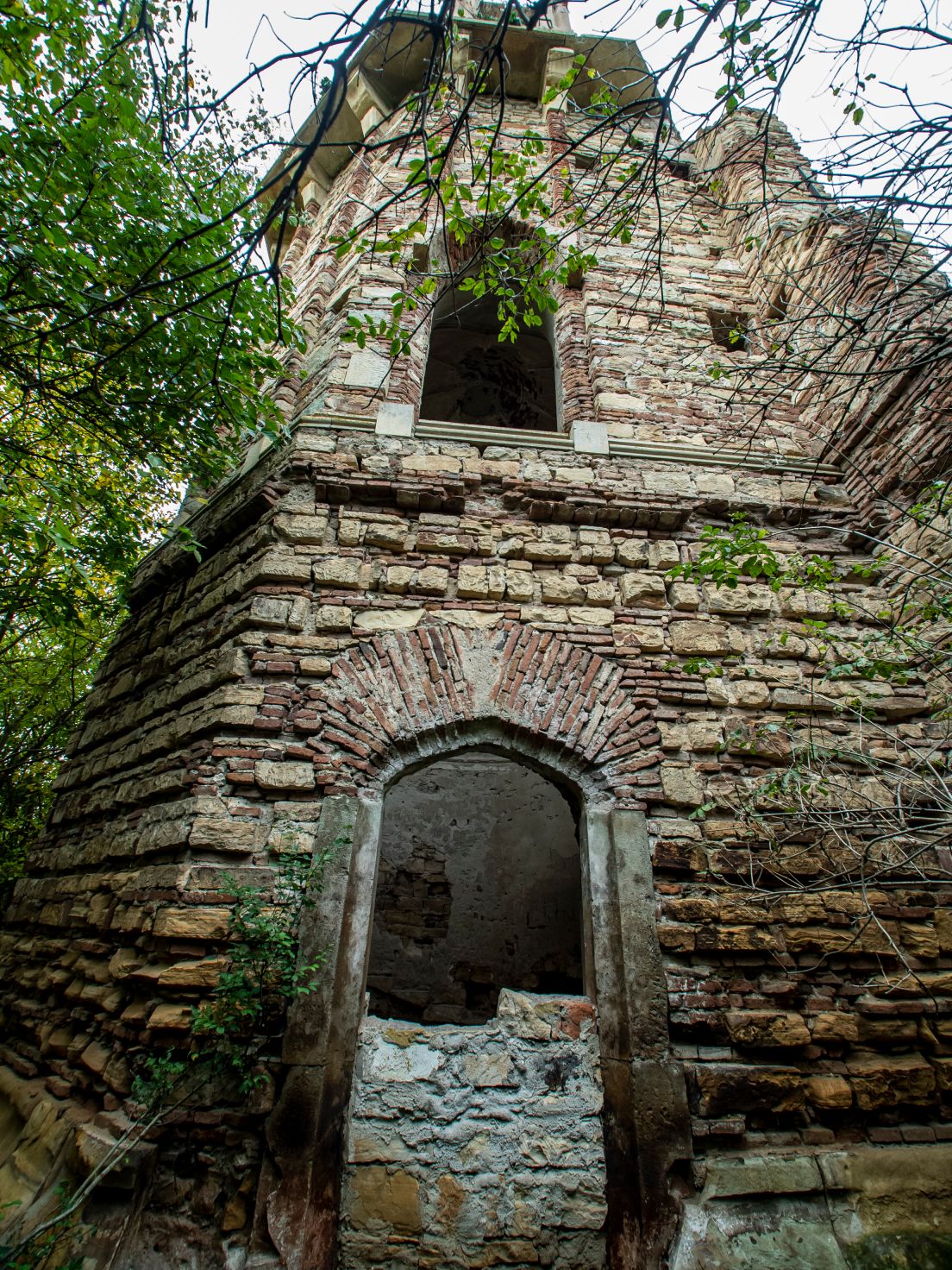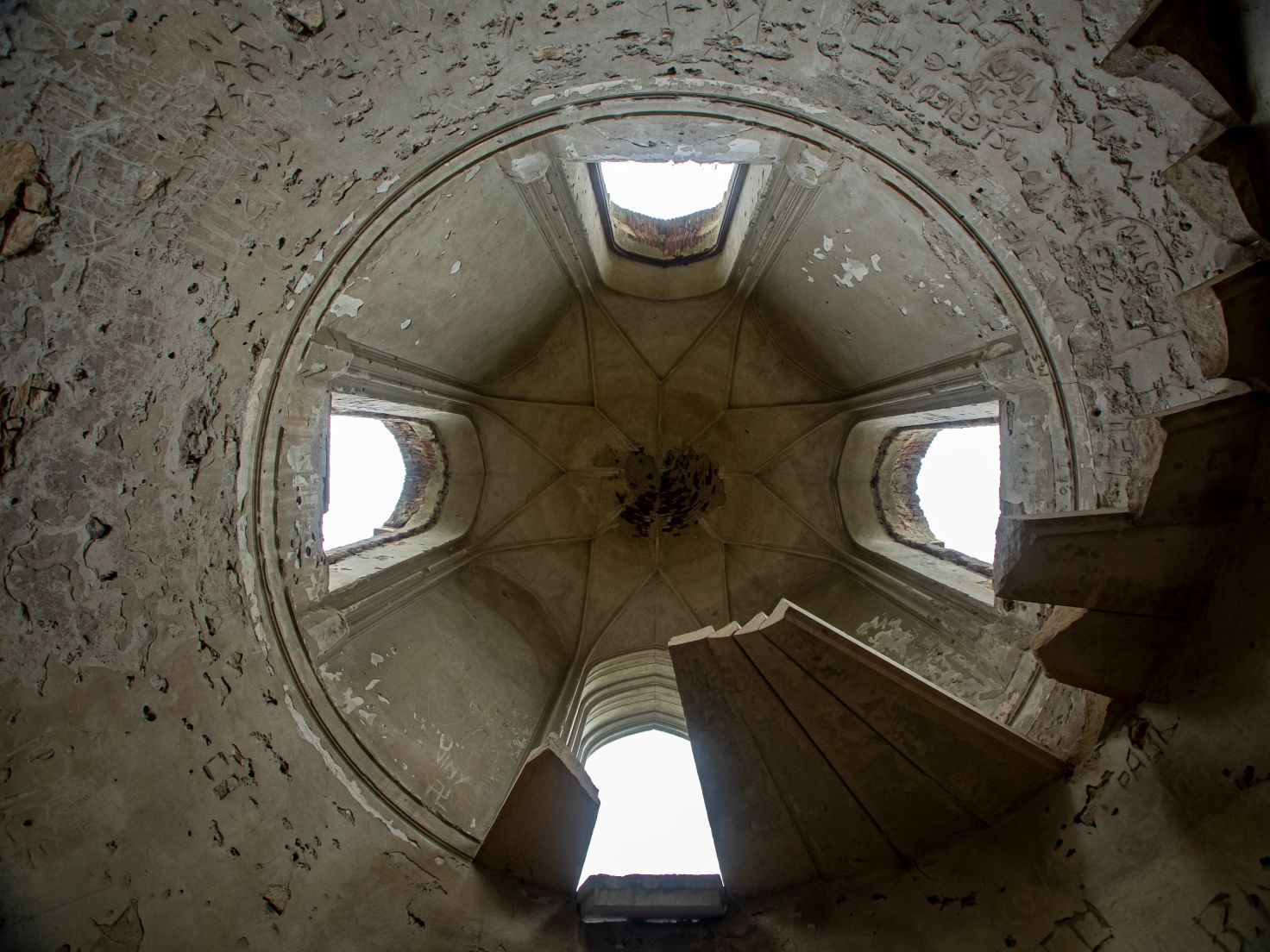The Teleki Castle Ensemble in Luna de Jos
Historic Monument Code: CJ-II-a-B-07692
Today, the Teleki Castle Ensemble in Luna de Jos includes, in addition to the 19th century park, a so-called hunting tower, of about 35 m in height – in Neo-gothic style, but with older lower levels, believed to be what remained of the former Renaissance castle –, and a smaller manor house with a slightly elongated rectangular ground plan, completed with a portico in front of the entrance and other smaller volumes attached to it. Although generally described as Neoclassical in style, the window frames on its main façade have features that still belong to the Baroque, such as specific window frames and pediments slightly reminiscent of those at the Haller Manor House in Coplean. In addition, around the portico we can find some Renaissance window frames (probably built in later). The few period photographs that remain (one from at least 1866) show us, next to the hunting tower, a larger building, with a U-shaped ground plan and large windows that articulate the façades. The building, dating probably from the Baroque period with possible later modifications, has disappeared without a trace.
Mentioned in written sources since the 14th century (Lona – 1315), the Hungarian name of the village, Kendi-Lona (1720) refers to the first important family that owned this domain: Kendi. The family, described as having a tragic fate, lost the estate in 1610, after which it came into the possession of the Haller family. According to historical accounts, in 1688 John Haller, on behalf of his son, who was in a rather tight situation, being sentenced to death, asked for the help of Count Michael Teleki, with whom he concluded a secret contract, so that the Count came into possession of the estate, which remained the property of the family until 1935.
Although there must have been a residence here earlier as well, according to tradition the construction of the castle was started by Count Michael Teleki and completed by his son, Paul: the mentioned Renaissance windows come from this period, one of which bears the year 1698 and the initials TMVI (possibly Michael Teleki and his wife, Judith Wéer). As Paul Teleki supported the anti-Habsburg uprising led by Francis Rákóczi II, it is said that the imperial troops destroyed the Renaissance castle – in the years 1727-28 a series of repair and construction works were recorded.
In the second half of the 18th century, when the owners were Paul’s son and nephew, several masons and stonemasons are mentioned working here – possibly when the Baroque building was erected. From the sources we learn that in 1758-60 a painter was hired for a series of portraits of Roman emperors, but also biblical scenes. At the end of the century, the estate was divided among the members of the family, of which Count Emeric Teleki hired Joseph Leder to carry out certain repair works, but also to expand some residential buildings. The works continued until 1811, when part of the estate was owned by Emeric’s widow, Mary Krausz (the Neoclassical building could have been erected in this period, or shortly thereafter, as the sources mention works in the 1820s and ’30s as well).
In the mid-19th century, Miksa Teleki united his property with the neighbouring one of László Teleki, thus forming the ensemble presented at the end of the century (a total of 930 ha), inherited by Count László Gyula Teleki. From 1935 the castle was sold several times, until its nationalisation, when it became the headquarters of the local collective farm. Since 1974, a Care and Assistance Centre has been operating here, a residential centre for adults and the elderly with physical, mental, and social disabilities, administered by the County Council. The current use of the building does not allow for visiting. The tower is owned by the Local Council, being in an advanced state of degradation. Only its surroundings can be visited.
Extra:
- In 1866, the newspaper Vasárnapi Ujság (no. 25 of 24 June) published an article dedicated to an ash tree found on the grounds, of several hundred years in age. Local memory linked the tree to the Kendi family and a tragic event in its history: one of the family members was arrested here – although it was already forgotten, which one. Two of them, Francis (voivode of Transylvania) and his brother, Anthony were executed at Alba Iulia in 1558 – during the reign of Queen Isabella Jagiellon; the son and nephew of Francis, Gabriel and Alexander were beheaded in Cluj, in 1594, by Prince Sigismund Báthori; in the same period another family member, Francis was executed at Gilău Castle; and in 1610 Chancellor Stephen Kendi was arrested, eventually having to choose the path of exile, due to a failed plot against Prince Gabriel Báthori. The ash, which began to dry out in the 1860s, marked the boundary between the properties of Counts Miksa and László. After Miksa joined the two properties, he built a gloriette above the tree, on which he placed a commemorative plaque with the following text (approximate translation): Six centuries have passed over me; I became the victim of 1863. Erected in memory of the Kendi family, made by István Csipszer in 1866.
- Count Miksa Teleki (1813-1872) had two elder sisters: Blanka (1806-1862) and Emma (1809-1893), the latter married (1840) to the writer August de Gerando, originally from Lyon.Blanka, who at an early age was remarked for her talent in painting and sculpture, was strongly influenced by her aunt, Teréz Brunszvik – founder of the first kindergartens in Hungary in the 1820s – becoming a pioneer in promoting women’s education. She published several articles (1845, 1846) on education, but not only: she supported the emancipation of women and expressed the belief that they too should have the right to vote, respectively to study in universities. In 1846 she founded a school for girls in Pest, which unfortunately operated for only two years. Due to her participation in the 1848-49 Revolution, she was sentenced to prison (Kufstein), from where she was released in 1857. After that she joined her sister in Paris, where she died in 1862.Another important figure in women’s education was Emma’s daughter, Antonina de Gerando (1845-1914). After her family had returned from France in the 1870s, she was first an educator in Budapest, offering also private lessons, and in 1880 she moved to Cluj, to become the first headmistress of the newly established girls’ secondary school (the first of its kind in Cluj, created after the model of the one in Budapest and operating in the current building of the Faculty of Chemistry and Chemical Engineering within the Babeș-Bolyai University). She led the school for 32 years, wrote textbooks and pedagogical works, and worked for pedagogical journal Nemzeti Nőnevelés.

Museum of Applied Arts in Budapest




